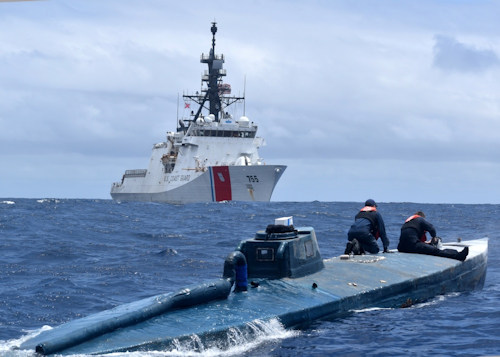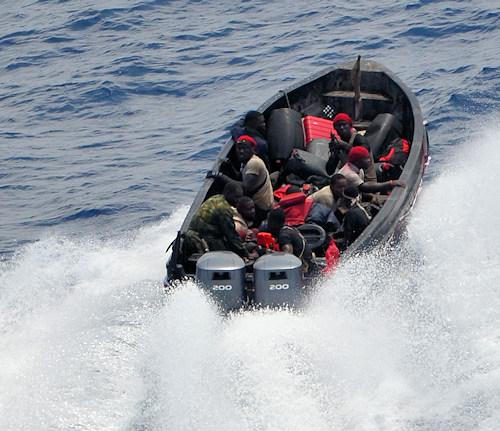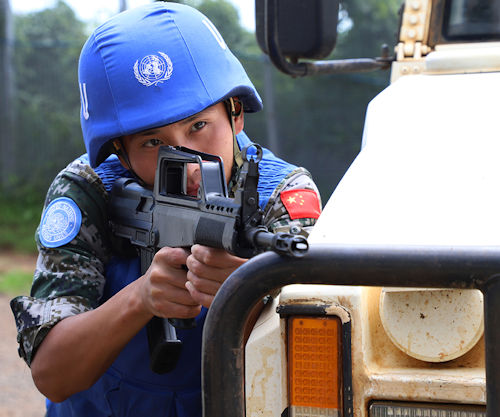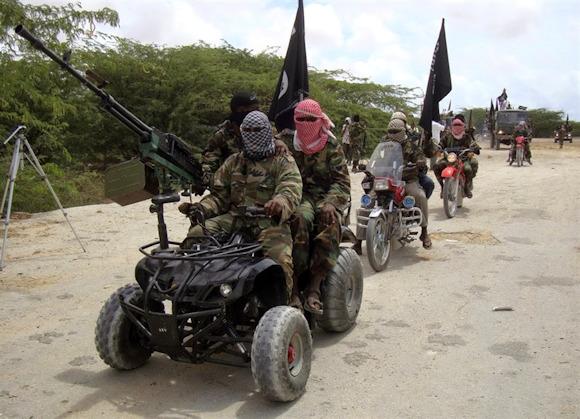It often happens that the definitions provided by a dictionary to illustrate the various meanings of a word are not sufficient to identify the particular meaning that the word itself can assume in a specialized context. This fact assumes a certain relevance in the military world, where the so-called "militarese" has always had the need to update or redefine a considerable number of terms in a more appropriate way, both to highlight their more properly "military" meanings and to make the terms themselves "more usable", therefore usable, even by non-military institutions or administrations.
A case in point is the definition of the term "Terrorism", a term that only a few years ago reached its final version, after a decade of semantic changes and filings, in an exhausting succession of over 150 definitions which, in the stubborn desire for "politically correct" (also in favor of terrorists) , they never managed to understand all the new forms and the various methodologies with which terrorism could manifest itself and express itself, with the consequent impossibility of being able to legally and operationally pursue it definitively.
It is now necessary to make a premise on the phenomenon of "globalization", a phenomenon that in recent years has allowed real and multiple benefits in various sectors, from commercial to technological, from cultural to financial, from professional to recreational. Globalization has also influenced, in a one-to-one relationship, many more properly "local" realities, projecting them into a more fragmented context and thus creating the phenomenon of "glocalization", that is an effect that manifests itself locally as a natural consequence or repercussion of a global event. As it was easy to predict, various and different threats to the very theoretical “Global Security” have also globalized and glocalized, with the full use of all those new resources and possibilities provided by a globalized world that has suddenly become more usable for all.
 In this context of international globalization, it has occurred that even a considerable number of dangerous "players" (defined "actors"), of different nature and extraction, unexpectedly and quickly came into contact with each other, creating those that have been defined “The New Hybrid Threats”, so called because they are implemented by characters or organizations able to combine their respective forces and operational capabilities to achieve certain objectives, not necessarily common ones.
In this context of international globalization, it has occurred that even a considerable number of dangerous "players" (defined "actors"), of different nature and extraction, unexpectedly and quickly came into contact with each other, creating those that have been defined “The New Hybrid Threats”, so called because they are implemented by characters or organizations able to combine their respective forces and operational capabilities to achieve certain objectives, not necessarily common ones.
To provide an immediate understanding of how this mechanism works between different actors, we always take as an example those situations of kidnappings / kidnappings of tourists for which it is not clear "who is doing what" as those who kidnap are not those who hold the victims and are not even those who ask for a possible ransom: the unfortunate / unwary tourists (but not only tourists!) are often moved and sold (or bartered), even several times, between the different types of actors (terrorists , criminals, pirates, traffickers, bandits, common criminals) in exchange for money, drugs, weapons, ammunition, explosives, food, technological equipment, precious stones, vehicles or fuels ... depending on the needs of the moment of those who sell, those who negotiate and of those who buy. Not to mention the possible and planned action of "political pressure" or "forced persuasion" exerted on the nations of the unwary mentioned in order to obtain political, economic or media visibility advantages.
Three main doctrines have followed the developments of hybrid threats over the years: the "Liang-Xiangsui doctrine" ("Doctrine of the asymmetric war without limits between terrorism and globalization" - 1999), the "doctrine of the NHTs" ("NATO doctrine of the New Hybrid Threats ”- 2010) and the“ Gerasimov doctrine ”(“ Doctrine of Gen. Valerj Gerasimov ”- 2013). These doctrines have highlighted the fact that these new threats can create dynamic processes capable of generating unpredictable armed conflicts capable of materializing in a short time, armed conflicts of an "unconventional" nature (that is, using innovative, non-traditional methods), " asymmetric "(with very unequal opposing forces in terms of consistency, armament and technology) and" low intensity "(which employ units of small / medium consistency in limited clashes).
 Incidentally, the context of Hybrid Threats also includes particular types of "activities" defined as "Non-Military War Operations", or "Non Military War Operations" (NMWOs), activities which, moreover, some nations consider as real "acts of war". In particular, these are activities that can be managed by both governments and civil, private, non-governmental organizations and therefore, precisely, "Non Military", and are aimed at creating various forms of destabilization in a specific country taken as a goal. These are activities and systems of various kinds aimed at guaranteeing the impunity of criminals and offenders, or managing the illicit trafficking of drugs, men and weapons, facilitating the spread of psychotropic substances among young people, using improperly and biased humanitarian aid, promote the political defense of alleged ethnic identities or even subsidize, facilitate and defend the spread of political and / or religious theories aimed at supporting hostile ideologies.
Incidentally, the context of Hybrid Threats also includes particular types of "activities" defined as "Non-Military War Operations", or "Non Military War Operations" (NMWOs), activities which, moreover, some nations consider as real "acts of war". In particular, these are activities that can be managed by both governments and civil, private, non-governmental organizations and therefore, precisely, "Non Military", and are aimed at creating various forms of destabilization in a specific country taken as a goal. These are activities and systems of various kinds aimed at guaranteeing the impunity of criminals and offenders, or managing the illicit trafficking of drugs, men and weapons, facilitating the spread of psychotropic substances among young people, using improperly and biased humanitarian aid, promote the political defense of alleged ethnic identities or even subsidize, facilitate and defend the spread of political and / or religious theories aimed at supporting hostile ideologies.
For the sake of completeness of information, non-military war operations are placed in an almost complementary position to the more well-known "Military Operations outside the war", that is "Military Operations Other Than War" (MOOTW), which are real military operations, conducted by the military, but in the absence of an officially declared "state of war", as now happens systematically.
In any case, the effects of those micro-conflicts caused both by the new forms of "Proxy War" and by the new “Wars for Rare Metals” (Rare Metals War).
The wars by proxy (called in the period of the Cold War "catalytic wars"), are those conflicts "not disclosed" between two nations that are however conducted on the territory of a third nation (as in a chemical reaction where a third agent acts as " catalysing ") sometimes trying to involve as many nations as possible in the conflict, for political and / or support issues. In essence, these are armed conflicts in which both "state" forces (regular military units or paramilitary units registered "in role") and "non-state" forces (militias, armed gangs, guerrillas) can be involved, even at the same time. , mercenaries) as well as "private" forces ("Military contractors" belonging to private military companies) which sometimes operate on behalf of those who do not intend to be officially involved. This also includes various financing activities, training and any form of military assistance, including cyber assistance.
 It should be noted that in the context of proxy wars, especially in the initial stages of greater uncertainty and in which the famous "international community" does not yet know very well where to place itself and to whom to agree (ie whether to take sides politically on the side of a legitimate on the illegitimate side of revolting factions), the rebels are normally, and more nobly, defined as "Insurgents" (“Insurgents”) as it would be inelegant to take sides officially, especially in the absence of a valid excuse, on the side of rebel or subversive forces. The same happens for the "Terrorists", who are sometimes passed off as "guerrillas for freedom" or as the "Pirates", who are often passed off as "common bandits".
It should be noted that in the context of proxy wars, especially in the initial stages of greater uncertainty and in which the famous "international community" does not yet know very well where to place itself and to whom to agree (ie whether to take sides politically on the side of a legitimate on the illegitimate side of revolting factions), the rebels are normally, and more nobly, defined as "Insurgents" (“Insurgents”) as it would be inelegant to take sides officially, especially in the absence of a valid excuse, on the side of rebel or subversive forces. The same happens for the "Terrorists", who are sometimes passed off as "guerrillas for freedom" or as the "Pirates", who are often passed off as "common bandits".
It is certainly true that in the various forms of "irregular warfare", where a combat front is not physically identifiable, the various fighting forces inevitably adopt the same guerrilla or counter-guerrilla tactics, but this does not mean that one must put on the same ethical and moral plane a terrorist with a guerrilla, a pirate with a contractor or a bandit with a policeman. Also in these cases the question of definitions is decisive as there is always a political-legal attempt, a pure exercise of hermeneutics, to declassify certain criminal and / or terrorist actions by playing on an alleged legitimacy deriving from an alleged "legal status" other than that real, perhaps even evoking an alleged "just cause".
In the context of the examination of the new micro-conflicts it is also possible to mention the "Wars for rare metals", not to be confused with the “Wars for precious metals”, which have always been underway to satisfy the demand for gold and diamonds.
The current needs of the globalized market, as well as the famous "sustainable ecology", have exacerbated exponentially those micro-conflicts for the dominance over energy sources, in this case inherent to the extraction and procurement of so-called "rare metals": a fifty metals including lithium, cobalt, rhodium, niobium, neodymium and praseodymium. These rare metals, as well as certain minerals, are useful not only to meet the needs of the most diverse technological sectors but are now also considered indispensable to meet the demands of the new "clean technology", or to produce all those batteries essential for new vehicles. electric propulsion.
 Metals, mines and all those involved in their extraction, storage and transport require high levels of protection and safety generally guaranteed by armed paramilitary formations called to face other armed groups, of the most disparate nature, often managed by hidden clients who try to impose their dominance on mines and deposits.
Metals, mines and all those involved in their extraction, storage and transport require high levels of protection and safety generally guaranteed by armed paramilitary formations called to face other armed groups, of the most disparate nature, often managed by hidden clients who try to impose their dominance on mines and deposits.
The effects of all these problems have inevitably spilled over, albeit in different ways and measures, on almost all the nations which, however, have adopted very different approaches to the various issues, assuming attitudes strongly influenced by the political will of the moment, by their historical and cultural heritage. as well as by the prevailing economic interests. In particular, those nations that possess a broader geostrategic vision have already identified what could be new operational doctrines in contrast to the various threats illustrated.
On the merits, a new doctrine is being consolidated which turns out to be a combination of the reformulation of an "old" doctrine, once used by the US OSS (Office of Strategic Service - the forerunner of the CIA) and known as "War of Threshold" (Liminal Warfare), and a recent doctrine of "operational merger" defined "War in Mosaic" (Mosaic Warfare).
A clarification: the term "Warfare" it is universally translated as "War" but in reality it must instead be understood as a "methodology for a specific form of combat" (eg Guerrilla Warfare, Anti-submarine Warfare, Amphibious Warfare…).
Threshold warfare, or liminal, is a methodology that establishes "threshold criteria" within or beyond which it is appropriate that a military operation, managed by a democratic country, is conducted in an open way (overt) or in a occult (covert) In this context there are four threshold levels, called “action layers”: the “superliminal” action layer (overt), where both the operation and the principal are evident; the “ambiguous subliminal” action layer (subliminal), where both the operation and the principal are presumed but not certain; the layer of “hidden subliminal” action (covert), where the operation is hidden but, if discovered, the principal must remain secret at all costs; the layer of “clandestine subliminal” action (covert clandestine), it is a totally secret occult operation (including the principal) also defined as “black operation”.
 At the level of strategic or operational Command, the threshold can also establish, for a specific mission, what are the criteria for which the operation itself can continue or must be canceled: based on the perception of one's presence by the enemy or on the basis of to its discovery and / or possible identification, with the consequent identification of the principal. Incidentally, to carry out a mission on a particular objective, for a matter of specific operational competence and specificity of the objective itself, a certain operating unit is activated rather than another (the importance of the definitions!). For example, a unit entrusted to carry out Counter-terrorism actions (activities and measures of a defensive and reaction nature aimed at reducing its vulnerability to possible terrorist attacks) will hardly be sent to carry out Counter-terrorism actions (activities and measures of an offensive nature aimed at producing prevention, deterrence and response to any terrorist attacks, also including projection, search and suppression of terrorists "at home" or with their supporters).
At the level of strategic or operational Command, the threshold can also establish, for a specific mission, what are the criteria for which the operation itself can continue or must be canceled: based on the perception of one's presence by the enemy or on the basis of to its discovery and / or possible identification, with the consequent identification of the principal. Incidentally, to carry out a mission on a particular objective, for a matter of specific operational competence and specificity of the objective itself, a certain operating unit is activated rather than another (the importance of the definitions!). For example, a unit entrusted to carry out Counter-terrorism actions (activities and measures of a defensive and reaction nature aimed at reducing its vulnerability to possible terrorist attacks) will hardly be sent to carry out Counter-terrorism actions (activities and measures of an offensive nature aimed at producing prevention, deterrence and response to any terrorist attacks, also including projection, search and suppression of terrorists "at home" or with their supporters).
As already mentioned, the War of Threshold is coupled with the innovative Mosaic War. The idea of Guerra a Mosaico comes from afar, from a project of the DARPA agency (Defense Advanced Research Projects Agency) relating to a process of acquisition, evaluation and distribution of information (integration between cyber-defense / offense e net centric warfare) to favor the "command and control" activities of "packaged" forces. Such an idea of "Packet forces" has developed and materialized in the current doctrine of the Mosaic War, a doctrine that provides for the establishment and use of one or more operational forces dedicated to operating in the context of asymmetrical conflicts and in the presence of multiple threats. Each Force is one "Operational fusion force", it is like a mosaic made up of various “tiles”, or rather of the various “operational groups” that can be quickly acquired thanks to their pre-established availability on the part of the Armed Force to which they belong. This means that the Force that is being created can have at its disposal both those men and those means deemed most suitable for carrying out the specific mission assigned in full compliance with the required operational parameters.
 These Forces, of limited consistency, have the great advantage of being quickly remodeled, have a high flexibility of use, are structured for isolated actions in an "undeclared", asymmetrical conflict context, and can have high projection capabilities even for a long time radius. In case of use in covert operations, due to their modular nature, they can also make use of operational detachments of contractors, provided by the numerous private military companies, whose military activities, precisely because of their private nature, cannot be officially attributed to specific Governments, state agencies or pro-government organizations.
These Forces, of limited consistency, have the great advantage of being quickly remodeled, have a high flexibility of use, are structured for isolated actions in an "undeclared", asymmetrical conflict context, and can have high projection capabilities even for a long time radius. In case of use in covert operations, due to their modular nature, they can also make use of operational detachments of contractors, provided by the numerous private military companies, whose military activities, precisely because of their private nature, cannot be officially attributed to specific Governments, state agencies or pro-government organizations.
Ultimately, the integration between the "Threshold War" and the "Mosaic War" establishes both the structural set-up of an innovative operational force and its methodology of possible use in the most dangerous, chaotic, unstable and ungovernable areas of the planet.
In a nutshell: "Think globally to act glocally, or think strategically to strike tactically".
Photo: Twitter / US Army / US Coast Guard / Navy / Asianewsphoto / Combating Terrorism Center / USAF












